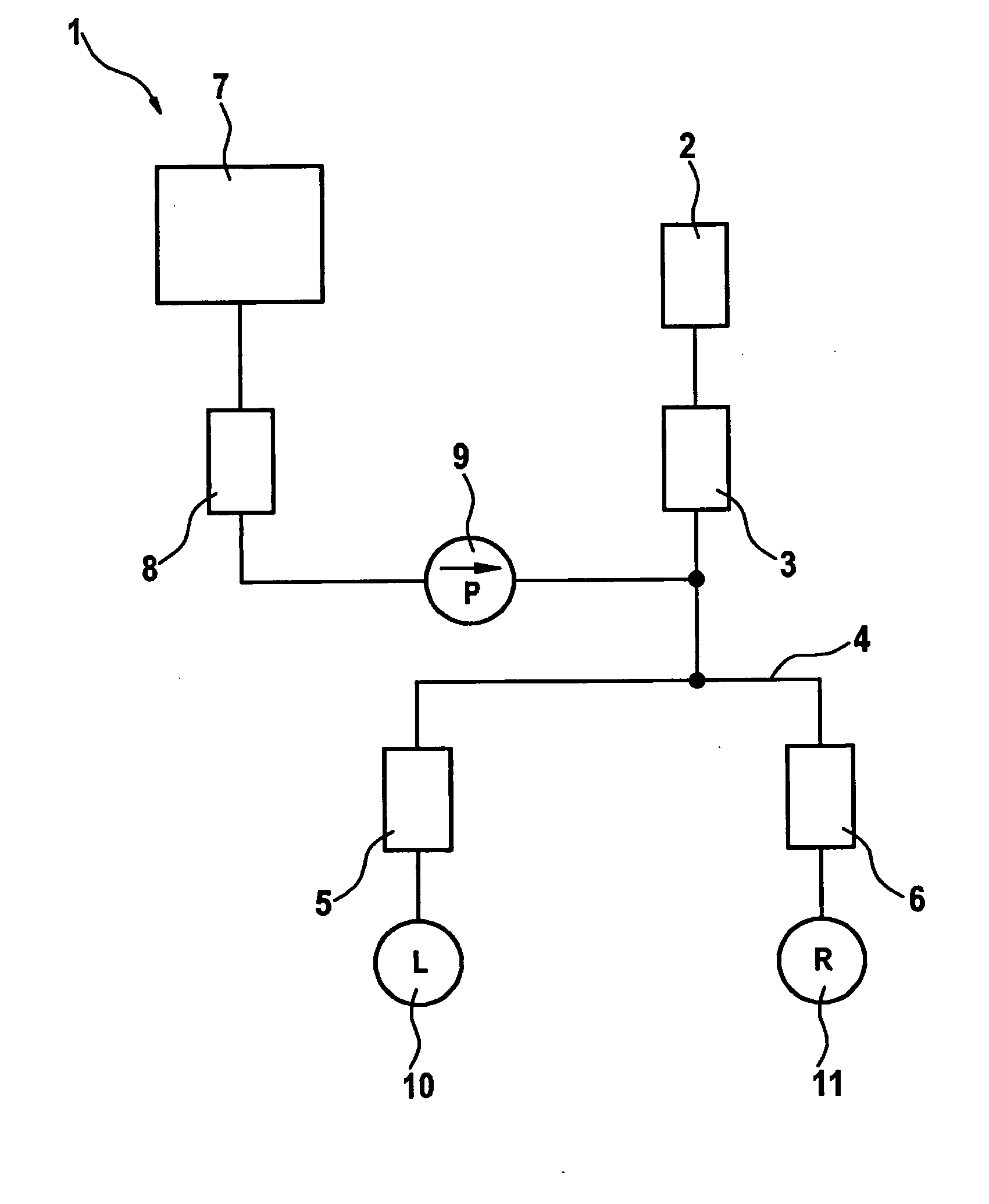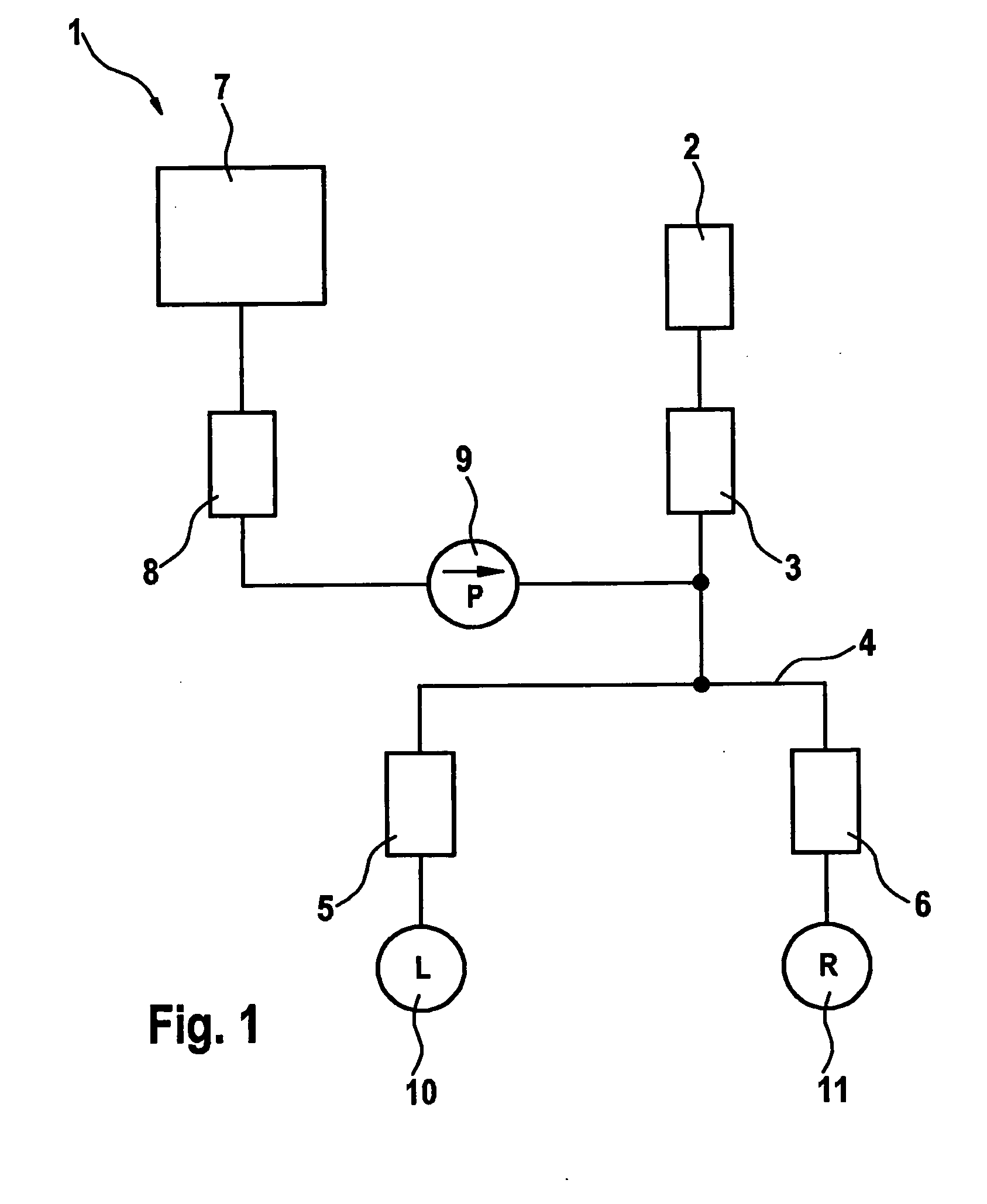Method for operating an hydraulic brake system in a motovehicle
a technology of hydraulic brakes and moto vehicles, which is applied in the direction of braking systems, braking components, transportation and packaging, etc., can solve the problems of energization and noise, and achieve the effect of simple and efficient manner and keeping the accompanying noise development as low
- Summary
- Abstract
- Description
- Claims
- Application Information
AI Technical Summary
Benefits of technology
Problems solved by technology
Method used
Image
Examples
Embodiment Construction
[0023]FIG. 1 shows a portion of an hydraulic brake system 1 for a motor vehicle, which includes wheel brake units 10 and 11 at, respectively, the left and right wheel of the vehicle. Brake system 1 has a main cylinder 2, which is actuated by the driver, and an electromagnetic hydraulic valve 3 postconnected to main cylinder 2, which functions as a reversing valve. Via a hydraulic valve 8 acting as high-pressure switching valve, and via a supply pump 9, hydraulic fluid from an hydraulic reservoir 7 is guided into brake circuit 4 for the supply of wheel brake units 10 and 11. Additional electromagnetic hydraulic valves 5 and 6, which act as intake valves, are connected upstream from wheel brake units 10 and 11 in brake circuit 4.
[0024]In order to heat the hydraulic fluid as quickly as possible especially at low outside temperatures, the different hydraulic valves are acted upon by phases of high and low current intensities during a heating period, which leads to heating of the hydraul...
PUM
 Login to View More
Login to View More Abstract
Description
Claims
Application Information
 Login to View More
Login to View More - R&D
- Intellectual Property
- Life Sciences
- Materials
- Tech Scout
- Unparalleled Data Quality
- Higher Quality Content
- 60% Fewer Hallucinations
Browse by: Latest US Patents, China's latest patents, Technical Efficacy Thesaurus, Application Domain, Technology Topic, Popular Technical Reports.
© 2025 PatSnap. All rights reserved.Legal|Privacy policy|Modern Slavery Act Transparency Statement|Sitemap|About US| Contact US: help@patsnap.com



